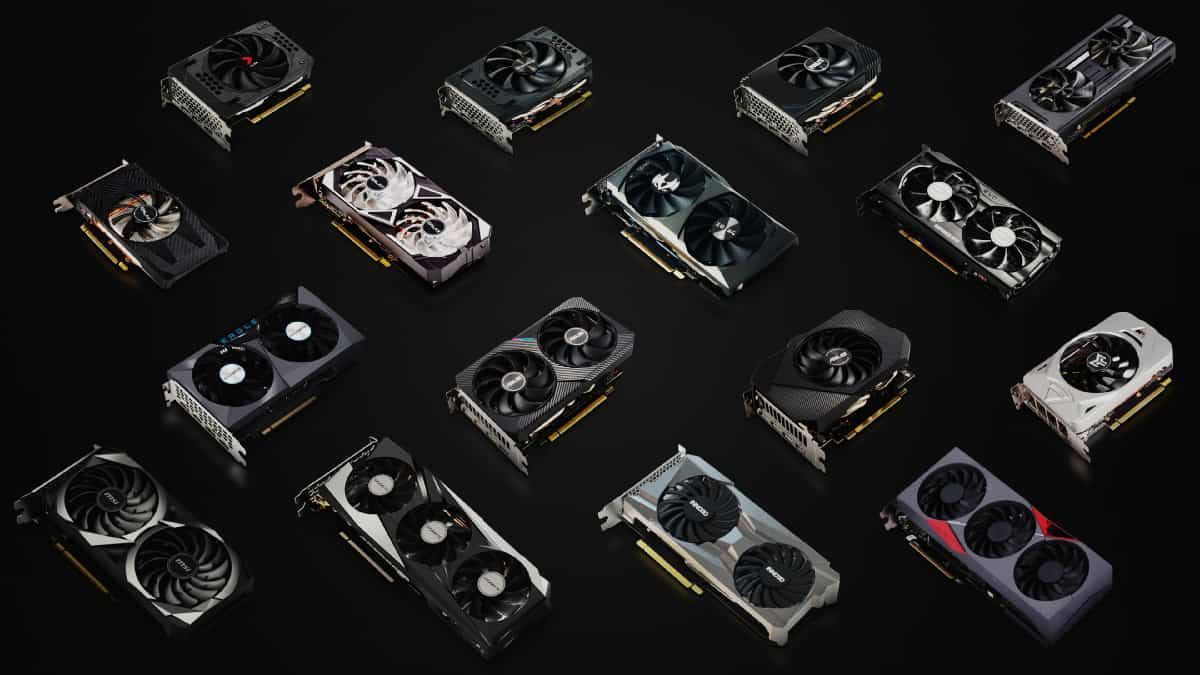What GPUs have RTX?

Table of Contents
NVIDIA RTX is a powerful graphics technology that provides real-time ray tracing and advanced AI-enhanced graphics capabilities for gamers and creative professionals. It is a feature of NVIDIA’s graphics processing units (GPUs) that enhances the visual experience in games, media, and other content by providing realistic lighting, shadows, and reflections, as well as enabling advanced features like accelerated ray tracing and AI-powered graphics. Nowadays, several different GPUs have been released with RTX technology across Nvidia’s lineups, including those from the GeForce RTX, Quadro RTX, and Titan RTX series.
Here's a list of the GPUs that use RTX:
- GeForce RTX 40 Series:
- GeForce RTX 4090
- GeForce RTX 4080
- GeForce RTX 4070 Ti
- GeForce RTX 30 Series:
- GeForce RTX 3090
- GeForce RTX 3080
- GeForce RTX 3070
- GeForce RTX 3060 Ti
- GeForce RTX 3060 12GB
- GeForce RTX 20 Series:
- GeForce RTX 2080 Ti
- GeForce RTX 2080 Super
- GeForce RTX 2080
- GeForce RTX 2070 Super
- GeForce RTX 2070
- GeForce RTX 2060 Super
- GeForce RTX 2060
- Quadro RTX Series:
- Quadro RTX 8000
- Quadro RTX 6000
- Quadro RTX 5000
- Titan RTX
These GPUs have been designed specifically for gamers and creative professionals, and they offer cutting-edge features, like real-time ray tracing, AI-enhanced graphics, and more.
Nvidia's 40-series is known for its third generation of ray tracing. The third generation of NVIDIA’s real-time ray tracing technology, known as “RTX,” was introduced with the GeForce RTX 40 Series GPUs. It is a significant advancement over the previous generation, providing improved performance, ray tracing accuracy, and support for new ray tracing features.
Some of the key features of the third generation of NVIDIA RTX include:
- Real-Time Ray Tracing: This technology enables the real-time, cinematic-quality rendering of complex scenes with accurate reflections, shadows, and global illumination.
- AI-Accelerated Graphics: RTX GPUs use AI algorithms to accelerate graphics performance, enabling new capabilities like real-time denoising and upscaling of lower-resolution content.
- Enhanced Shading: RTX GPUs feature advanced shading technologies like variable-rate shading, which increases performance by dynamically adjusting the number of shading calculations based on the complexity of the scene.
- Hardware-Accelerated Ray Tracing: RTX GPUs include dedicated hardware (RT Cores) for accelerating the ray tracing process, making it possible to render complex scenes in real-time.
Overall, the 3rd generation of NVIDIA RTX technology provides a major leap forward in the capabilities of GPUs for real-time ray tracing and advanced graphics. It has been adopted by many of the world’s leading game developers and is changing the way games and other content are created and experienced.
Do GTX cards have RTX?
No, GTX cards do not have RTX technology. RTX is a feature specific to NVIDIA’s Turing and newer architecture GPUs, which were introduced with the GeForce RTX 20 Series. The previous generation of NVIDIA GPUs, including the GTX 10 Series, do not have the RTX technology and are limited to traditional rasterization-based graphics rendering.
Is GTX or RTX better?
RTX GPUs are better than GTX. They offer better performance, especially for games that support ray tracing and DLSS.
Is it worth getting an RTX card?
If your budget can stretch to an RTX card, it is definitely worth it. RTX cards open doors to the world of ray tracing and have other features such as DLSS 2.0 that will significantly improve your gaming experience.
